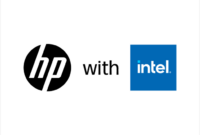Speakers
2 speakers
Date & Time
On Demand
Webinar
Duration: 30 minutes
Cost: No Fee
The technology trends that have emerged over the last few years aren’t necessarily new as they have centered on telework, cloud services and cybersecurity. But what is new is how the pandemic and the ever-changing cyber landscape has accelerated the need to better understand and implement these technologies and practices.
The goal here isn’t just adding new technology for technology sake — common refrain agencies and industry have said often over the last two decades – but the focus has to be on the outcomes of the agency mission.
The technology has to drive processes that are simple and secure, and, most importantly, effective.
Todd Gustafson, the president of HP federal and head of US public sector, said there are ways agencies can take advantage secure cloud capabilities and other technologies to drive better mission outcomes.
“When we think about culture, when we think about collaboration, as an example, we need to think about work not as a place to go, but as an opportunity to be with others. If that entire experience of going to the office is all you do is what you did at home, but you now did in the office, you miss that greater opportunity,” Gustafson said during the discussion Evolution of the Office, sponsored by HP. “Organizations or agencies or companies need to take that as an opportunity to reinvent what they’re doing in the office in a way that drives a level of collaboration and excitement.”
To achieve those two objectives, agencies need a level of flexibility to help improve the hybrid experience many employees will continue working in over the next few years.
This means having advanced video collaboration tools that promote digital equity.
“The technology meshes itself in a way that provides digital equity to every individual that is speaking. It does what’s called geofencing and video fencing so that your voice and your actual image is equitable with everybody else in the room,” Gustafson said. “I’ve been with HP for 35 years, it’s the coolest thing that we’re working on right now in a way that’s really powerful and is a game changer.”
Pushing security down through the OS layers
The same side of the flexibility coin is any device also must be secure.
Gustafson said with so many more connected servers, storage, networking, PCs and printers security becomes more imperative.
“We think about it across three different layers right above the operating system (OS), at the OS and below the OS. You need to have strategies to be able to address all of those with all of your entry points,” he said. “We made an acquisition two years ago of a company called Teradici. Teradici was a leader in visual representation. So think about this for a minute that you work for one of our three letter agencies, and you can’t come to the office today because your child is sick, or whatever it might be, and you need to do work. Wouldn’t it be powerful that you’re able to do exactly what you want to do in your office, but on your own PC? And all that transmitted over the internet was mouse clicks, keyboard clicks and pixels, that were that data. Basically, at its core, Teradici does exactly that, and leaves the data in the data center in a way that it’s protected through the technologies and tools that the government’s purchased. All you do is have a visual representation, and it just it works.”
A big piece of this secure but flexible hybrid work approach is the move to the cloud.
Gustafson said agencies have developed a level of trust with cloud services over the last few years that is opening the door to more opportunities to improve their mission.
“The state of Utah has struggled with this hybrid work environment so how do they change as the workforce changes as the technology and the tools change? How do they provide technology to folks that are at their homes that might not have strong internet connectivity that may be in remote areas? This brings up what the government has started to do a few years ago, full device lifecycle management,” he said. “The Navy did the same thing with a new hardware contract where they have us manage up to 700,000 devices on their network. They took all their all of their sailors, all their civilians out of doing that, and gave it to industry that does it for their day job.”
He said both the Navy and Utah cut their average time to meet their employees’ technology needs down to a matter of days versus more than 30 days on average.
“What’s more powerful about that is as these agencies change as their workforce goes up and down and flexes. They’re no longer having to own the capital cost of those assets. It provides that financial flexibility for them to let industry manage those devices, lower their overall cost while and prove the uptime for those customers,” Gustafson said. “At its core level, it’s as a service, much like cloud is for the data center, but at a device level. That’s the fastest accelerating part of our business that we see happening at both the state and government level.”
Learning objectives:
- Trends in hybrid and telework
- Managing devices and data security
Please register using the form on this page or call (202) 895-5023.
Speakers

Todd Gustafson
President, HP Federal LLC and Head of U.S. Public Sector, HP Inc.

Jason Miller
Executive Editor, Federal News Network
Sponsors

Please register using the form on this page.
Have questions or need help? Visit our Q&A page for answers to common questions or to reach a member of our team.
